
Workshop Details
For sustainability reasons, this information is available only as digital version
FOYER: Materials Science & Miscellaneous
Mentors
Laure Bourgeois
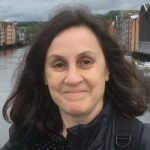
________________________________________________
Laure has been in the field of electron microscopy for over 30 years. After a PhD at the University of Melbourne and research fellowships at the National Institute for Materials Science (NIMS) in Japan, she moved to Monash University. She then joined the nascent Monash Centre for Electron Microscopy (MCEM) as a microscope scientist and research academic. She is currently a Professor and the Interim Academic Director of MCEM. She is also affiliated with the Department of Materials Science and Engineering. Her main research interest is the application of high-resolution transmission electron microscopy techniques for the characterisation of inorganic materials, with emphasis on nanoscale, aperiodic and defective structures. Her current work focuses on solid-solid phase transformations in light metals and in particular solid-state nucleation mechanisms. As an academic, Laure has supervised and mentored 15(1) PhD (Masters) students and 5 postdoctoral fellows. She is presently co-supervising 6 PhD students. She has developed and delivered several undergraduate lecture courses on the characterisation of materials, working closely with postgraduate student demonstrators to optimise laboratory courses. In her role as a microscope scientist, Laure has provided expert advice to and supported the research of over one hundred postgraduate students and research fellows from a wide range of backgrounds. She has organised several workshops on electron microscopy and crystallography aimed primarily at postgraduate students and early-career researchers. In her current position, she advises her MCEM colleagues on academic matters. Laure is a member of the Australian Microscopy and Microanalysis Society and has been promoting electron microscopy via the Education Committee of Microscopy Australia and the International Union of Crystallography’s Commission on Electron Crystallography.
Grace Burke
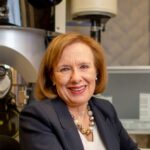
________________________________________________
Grace Burke received her BS in Metallurgical Engineering from the University of Pittsburgh, and her PhD in Metallurgy from Imperial College of Science and Technology. Her research has focused on the role of microstructure in materials performance – particularly the environment-sensitive behavior of materials. She recognized for her expertise in advanced microstructural characterization, irradiation damage/embrittlement, SCC and structural materials for nuclear power applications. Her career has included ~30 years in industry, including US Steel Research Laboratory, Westinghouse Science & Technology Center, and the Bettis Atomic Power Laboratory, followed by 10 years in academia as Professor and Director of the Materials Performance Centre (and Director of the Electron Microscopy Centre from 2012 through 2016) at the University of Manchester, where she is now Professor Emeritus. Grace joined Idaho National Laboratory in 2023 as INL Laboratory Fellow and Scientific Lead for Reactor Structural Materials at the Materials and Fuels Complex, and was previously a Corporate Fellow at ORNL. Grace was the 2019-2023 President of the Royal Microscopical Society and the 2005 President of the Microscopy Society of America. Fellow of TMS, ASM International, IOM3 (UK), the Microscopy Society of America and the MicroAnalysis Society, and is an Honorary Fellow of the Royal Microscopical Society. Awards include IMS/ASM Sorby Award, ASM Charles S. Barrett Silver Medal, the Coriou Medal of the European Federation of Corrosion, ANS Mishima Award, and was the 2025 Hume-Rothery Lecturer at the University of Oxford. Grace has authored or co-authored over 200 publications.
Patricia Kooyman
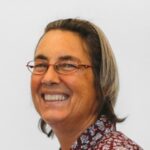
________________________________________________
Drawing on personal experiences of hardship and gender discrimination, Patricia mentors mainly by asking questions and helping people analyse their own feelings about and reactions to life circumstances. Mentees learn a way of thinking and approaching issues that will serve them throughout the rest of their life and is applicable to any situation in life, whether in a work setting or outside of work. Having bridged multiple cultures through her parents heritage, travelling extensively, and emigrating to another continent, Patricia has developed a flexibility and an open mind that she tries to use to help people get unstuck, grow, and flourish – both in their professional and personal life. Having worked both at an international company and in different academic settings, Patricia is well versed in all kinds of different work cultures.
Jin Won (Maria) Seo
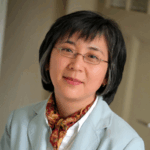
________________________________________________
Prof. Jin Won (Maria) Seo earned her Master’s and PhD degree in physics from RWTH Aachen University in Germany and completed her PhD under the supervision of Prof. Urban and Dr. Kabius at the Research Centre Jülich. Her postdoctoral experience includes positions at the Electron Microscopy for Materials Science (EMAT) group at the University of Antwerp with Prof. Nick Schryvers, and at the IBM Zurich Research Laboratory in Switzerland, where she was responsible for managing the TEM laboratory. Prof. Seo joined KU Leuven in 2007 after her tenure at EPFL in Switzerland, where she worked as a postdoctoral researcher and later as a scientific staff member at the Institute of Physics of Complex Matter (IPMC), with access to the CIME microscopy center. Currently, she is a full professor in the Department of Materials Engineering (MTM) at KU Leuven, Belgium, and co-leads the Functional Oxide Coating Centre, a collaborative initiative between the Department of Materials Engineering and the Department of Solid State Physics and Astronomy at KU Leuven. Additionally, she serves as the scientific head of KU Leuven’s Electron Microscopy Core Facility, overseeing a wide range of instrumentation including SEM, SEM-FIB, ESEM, EPMA, and TEM with more than 100 users. She has been instrumental in establishing and expanding the university’s TEM capabilities. Her research focuses on the synthesis and characterization of low-dimensional materials. She has authored over 190 peer-reviewed publications and is co-inventor on five patents.
Industry
Thermo Fisher Scientific – Materials Science
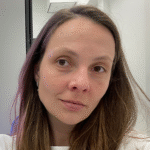
________________________________________________
Dr. Maria Meledina is a product manager in High End TEM for materials science. She joined the Thermo Fisher R&D team in 2021, working on application-driven development of TEM. Prior to her role at Thermo Fisher, Maria focused on characterisation and development of energy materials through advanced TEM while working at RWTH Aachen University and Research Center Julich. Holding the PhD in Physics earned at EMAT, the University of Antwerp and previous degrees in materials science and chemistry Maria has an extensive experience in applying a broad range of advanced TEM techniques for materials development.
Thermo Fisher Scientific are proud of our Mission: To enable our customers to make the world healthier, cleaner and safer. Through our electron microscopy solutions and expertise, we help customers accelerate innovation and enhance productivity across the life sciences, materials science, and semiconductor industries. We offer a broad range of products covering all imaging scales from atomic resolution to defect characterization at the millimeter scale. Analytical solutions span an equally wide range from single atom spectroscopy in the TEM to large area coatings characterization with XPS. At Thermo Fisher Scientific, Diversity & Inclusion is vital to the future success of our mission. Our Women’s Employee Resource Group specifically is committed to making Thermo Fisher Scientific one of the world’s most admired companies by fostering the advancement of women and building a corporate culture in which women employees are recruited, valued, developed, retained, and promoted globally.
Hitachi High-Tech
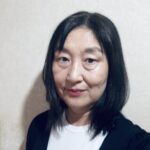
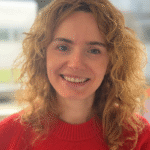
________________________________________________
Toshie Yaguchi is a TEM Applications Engineer at Hitachi High-Tech Corporation, specializing in TEM, STEM, and FIB technologies. She joined Hitachi in 1986 and has focused on advancing materials analysis using transmission electron microscopy. In 1996, she helped develop a focused ion beam (FIB) device for TEM sample preparation, enabling low-damage techniques for semiconductors, metals, and polymers. She earned her Ph.D. in engineering in 2001 with a dissertation on FIB sample preparation technology. She contributed to the development of a semiconductor evaluation system combining a 40 kV FIB with a 200 kV STEM/SEM and designed a 360-degree rotatable sample holder for FIB-processed samples. From 2005, she worked on environmental TEM (ETEM) with enhanced differential pumping and developed specialized holders for in-situ observation under various gas environments. Since 2015, she has been involved in developing a 40-120 kV analytical electron microscope for beam-sensitive nanomaterials and continues to enhance in-situ TEM technologies. In 2022, she received the Japan Society of Microscopy Award (Seto Prize) for her contributions to environmental TEM development. She also served as Executive Director of the Japanese Society of Microscopy (2011–2014) and Treasurer of the Second East-Asia Microscopy Conference (2015). Currently, her primary focus is on advancing in-situ TEM technologies using transmission electron microscopes.
Justyna Grzonka is the SEM and Ion Beam Milling Applications Specialist at Hitachi High-Tech Europe, where she provides expert support through customer consultations, training sessions, and system demonstrations focused on ion and electron beam technologies. She earned her degree from the AGH University of Science and Technology in Kraków, Poland, followed by a Ph.D. in Materials Science from the Institute of Metallurgy and Materials Science at the Polish Academy of Sciences. Her academic and professional journey has taken her across Europe, with research and technical roles in Poland, Portugal, and Spain. Justyna completed a postdoctoral fellowship at the International Iberian Nanotechnology Laboratory (INL), where she specialized in atomic-scale characterization of defects in 2D materials. She later joined the University of Cádiz, focusing on the integration of Energy Dispersive X-ray Spectroscopy (EDX), Scanning Transmission Electron Tomography (STEM), and deep learning-based denoising techniques to advanced nanomaterials imaging and analysis. Since joining Hitachi High-Tech in 2022, Justyna has been actively involved in bridging microscopy technologies with practical applications, helping researchers and engineers unlock new insights at the micro- and nanoscale.
Hitachi High-Tech develops global business around the three segments of Nanotechnology Solutions, Analytical Solutions and Industrial Solutions. It aims to be a successful enterprise trusted by all its stakeholders and contributing to social progress through business activities that emphasize value creation through high tech solutions. Hitachi High-Tech Europe GmbH operates since 2002 from Krefeld with offices for more than 110 employees, a clean room and demo rooms for scanning and transmission electron microscopes as well as focused and broad ion beam systems and for sample preparation and failure analysis. Classic fields in life science and material Sciences are equally covered as new developing fields in battery research and new composite materials for example in the energy or automotive sectors. Our team of experience experts supports you from your first request way until the operation of your instrument.
Quantum Detectors
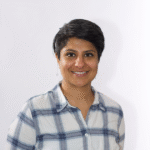
________________________________________________
Dr. Akhila Bettadapur is a life science and microscopy specialist, with expertise in molecular biology and advanced imaging technologies. As a Technical Sales Engineer at Quantum Detectors, she works at the interface of research and instrumentation, supporting scientists in deploying cutting-edge detector solutions for electron microscopy. Prior to this, Akhila led field applications and technical sales efforts at Refeyn, where she played a key role in the adoption of novel single-particle analysis platforms across academic and industry sectors. Her cross-functional experience spans scientific research, product development, and customer success – bridging the gap between innovative technologies and the researchers who use them. Akhila earned her Ph.D. in Biochemistry, Molecular, Cellular, and Developmental Biology with a Designated Emphasis in Biotechnology from the University of California, Davis. Her doctoral work focused on the medially relevant human parasite Entamoeba histolytica, where she developed new approaches to study the molecular basis of the host-cell interaction trogocytosis.
At Quantum Detectors, we design and deliver world-class detector solutions that enable researchers to push the boundaries of what’s possible in electron microscopy. Our advanced direct electron detectors (DEDs) and high-speed readout systems are used globally to support applications in 4D STEM, fast diffraction, in situ studies, and beam-sensitive materials.
Founded in 2007 as a spin-out from the UK’s Science and Technology Facilities Council and Diamond Light Source, we’ve grown to become a trusted technology partner to leading microscopy labs and synchrotron facilities worldwide. Our detectors are fully compatible with major TEM platforms, including Thermo Fisher, JEOL, and Hitachi — with the largest global installed base of hybrid pixel detectors in TEM.
We are proud to collaborate with research leaders across academia and industry, including the University of Glasgow and ESRF, to ensure our technology continues to meet the evolving needs of the scientific community.
condenZero
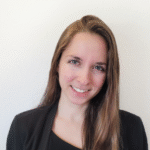
________________________________________________
Amelia Estry started in physics as a bachelor student at the Florida State University in Tallahassee, Florida while working as a research assistant at the National High Magnetic Field Laboratory (NHMFL). After graduation, she worked for one year at the Max Planck Institute Center for Chemical Physics of Solids (MPI CPfS) in Dresden, Germany. Amelia did her PhD at the Swiss Federal Institute of Technology in Lausanne (EPFL) on focused ion beam (FIB) fabrication of resonating cantilevers to explore symmetry breaking in quantum materials. She now works in research and development on cryogenic transmission electron microscopy at the Swiss start-up, condenZero.
condenZero was founded in 2019 as a spin-off from the physics department of the University of Zurich. Founders Denys Sutter and Dominik Biscette started the company to solve major technological challenges within the field of cryogenic transmission electron microscopy (cryo-TEM). Emergent phenomena in quantum materials, such as superconductivity and charge or spin ordering, often require the ultra-low temperatures of the liquid-helium range for their study. Unfortunately, the tight spatial constraints of side-entry sample holders make accessing these temperatures technically arduous. The conventional approach to cryo-TEM for side-entry holders — which involves mounting a small dewar on the end of the holder, coupled to the sample with a long thermal link — suffers from slow cool-down time, limited hold time at base temperature, poor thermal stability, poor imaging resolution, and a large thermal drift. The condenZero team specializes in ultra-high vacuum and cryogenic temperatures for high-precision measurements. condenZero’s lightweight cryo-TEM holders utilize a continuous flow cryostat, which enables a cool-down time from room temperature to base sample temperature of 5.2 K within one minute. This temperature can be maintained with a stability of +/- 2.5 mK for days.
Ferrovac
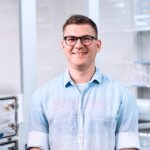
________________________________________________
Marc Maier is the co-CEO of Ferrovac and a Swiss-certified mechanical design technician. Growing up in a family business specializing in UHV equipment, he gained hands-on experience from an early age and has held various roles at Ferrovac since 2017. Since 2022, Marc has been assisting scientists and facility managers in establishing controlled environment workflow sample transfer systems while coordinating with instrument manufacturers.
Founded in 1996 as a spin-off from ETH Zurich, Ferrovac has been at the forefront of ultra-high vacuum (UHV) sample manipulation and transportation for nearly 30 years. Our journey began with the invention of the magnetically-coupled wobblestick—an innovation that addressed a fundamental challenge in scanning tunneling microscopes (STMs). At the time, conventional wobblesticks relied on pressure differences in the bellows, which inadvertently pushed the manipulator into the instrument, limiting precision. By introducing magnetic coupling, we revolutionized sample handling, allowing users to transfer their delicate skills directly into the chamber with unprecedented control. Building on this foundation, we have expanded our capabilities to facilitate seamless sample transportation across instruments, institutions, and even international borders—all while maintaining UHV and cryogenic conditions. At Ferrovac, we are dedicated to empowering researchers to push the boundaries of their fields. Our commitment to excellence is reflected in our high-quality equipment, meticulously designed to deliver precision and durability for decades. We thrive on addressing complex scientific challenges with novel ideas and cutting-edge engineering solutions. To foster the next generation of innovators, we actively participate in the physics lab technician apprentice exchange program at ETH Zurich. This initiative helps bright young minds transition into the industry while strengthening our ties with academia. Our strong customer relationships keep us attuned to evolving technological needs, ensuring we remain at the forefront of innovation in UHV technology.
Protochips
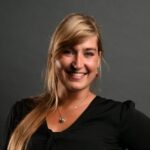
________________________________________________
Nynke Krans started her PhD project at the Inorganic Chemistry and Catalysis group in 2015 at Utrecht University under the supervision of Prof. Dr. Ir. Krijn de Jong and Dr. Jovana Zečević. During this PhD project, she investigated the attachment of colloidal iron oxide nanoparticles to various support materials for the Fischer-Tropsch reaction, with a focus on the use of electron microscopy. After finishing her PhD in 2020, she worked for the National Institute for Public Health and the Environment (RIVM) on nanomaterial safety policies. In 2021 she joined Protochips as an applications scientist specializing in specializing in in-situ liquid phase (S)TEM. Most of her time is spent educating, helping and discussing experiments with new and experiences users for in situ microscopy.
Protochips is a pioneering technology company specializing in in situ electron microscopy solutions. By integrating innovative hardware and software, Protochips enables scientists and researchers to observe structure – function relationships at the nanoscale. With a focus on scaling bulk experiments to the nanoscale, accelerating productivity, and fostering collaboration and discovery by providing complete workflow solutions, Protochips systems are used in leading research institutions to drive breakthroughs in materials science, chemistry, engineering, and more.
Miscellaneous
ER-C
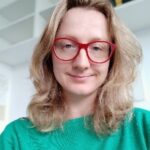
________________________________________________
Dr. Marta Lipińska-Chwałek is a scientist and User Officer at the Ernst Ruska-Centre for Microscopy and Spectroscopy with Electrons (ER-C) at Forschungszentrum Jülich (FZJ), Germany. She earned her PhD (2005–2009) through a joint program between the Faculty of Metals Engineering and Industrial Computer Science at the AGH University of Science and Technology in Kraków, Poland, and the Institute of Solid-State Research at FZJ. Following her doctoral studies, she conducted postdoctoral research at the Institute of Energy and Climate Research (IEK-2) at FZJ. She subsequently held a position as Associate Professor of Electron Microscopy at the Faculty of Metals Engineering and Industrial Computer Science and the International Centre of Electron Microscopy for Materials Science (IC-EM) at AGH University. From 2014 to 2021, she continued her research in advanced electron microscopy at both FZJ and the Central Facility for Electron Microscopy (GFE) at RWTH Aachen University, Germany. Her research focuses on the high-resolution characterization of deformation and degradation mechanisms in metals, alloys, and ceramics, using advanced transmission electron microscopy (TEM) techniques. Since 2022, she has led the User Office at the ER-C User Facility, where she supports external users and coordinates access to world-leading microscopy infrastructure.
The Ernst Ruska-Centre for Microscopy and Spectroscopy with Electrons (ER-C) is a leading center of excellence and user facility, hosting some of the world’s most advanced electron microscopes for applications in materials science, condensed matter physics, and life science cryo-EM. ER-C offers access to state-of-the-art electron microscopy, including sub-ångström imaging and spectroscopy, in situ TEM, single-particle cryo-EM, and cryo-tomography. Users benefit from top-tier instrumentation and expert scientific support. Access is open to universities, research institutes, and industry through proposal-based selection, reviewed by an external panel. Additional access opportunities are available through Horizon Europe projects like ReMade@ARI and RIANA, which provide integrated access to complementary techniques such as synchrotrons, neutron sources, and ion beams. ER-C is also expanding through the ER-C 2.0 initiative, delivering five next-generation electron microscopes by 2025–2026, and contributing to hardware development via the IMPRESS project. Visit our table to learn more about the ER-C infrastructure and access opportunities for external users.
Career Planning
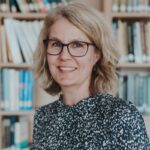
________________________________________________
Viola Middendorf accompanies researchers and early career scientists in reflecting and deciding on career options, plan next steps and master challenges. An analytical approach, professional empathy and solution orientation are the guidelines of her approach. As a trained psychologist with a focus on occupational psychology she has gained experience as a scientist in academic research as well as in different roles in Human Resources (personnel development and personnel selection) in different industries (agriculture industry, chemistry and pharma, consulting). She loves to combine her academic background with her experience and strong connections in industry.
Which career path suits me? How can I make a good decision about my next career move in industry or academia? What and who can support me on my way? How can I benefit from a good professional network and build it up and keep it running? These and similar questions are part of the career planning offer. With the help of DIY Career planning tools and in discussion with career consultant Viola Middendorf, you can get impulses to set up your career more consciously and in a targeted way.
Application Portfolio Check
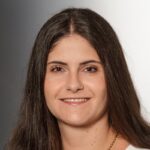
________________________________________________
Anna Mindermann is a recruiter at Forschungszentrum Jülich, where she supports various institutes throughout their recruitment processes. Her responsibilities include the publication of appealing job advertisements, identifying suitable external media channels, managing applicant communications, and coordinating and supporting job interviews. Additionally, she conducts internal training sessions focused on best practices for job advertisements and interview techniques. Anna is passionate about connecting with applicants from around the world and discovering innovative ways to attract top talents in science.
Get feedback and answers to your questions about applications and application documents: Bring your CV or cover letter and receive individual feedback on how to improve your documents and get updated information on recruiting trends in industry and academia. Your questions are the focus, e.g. How do I highlight particular skills and competences? What counts when applying for leadership positions? (How) do I address the topic of family / children?
